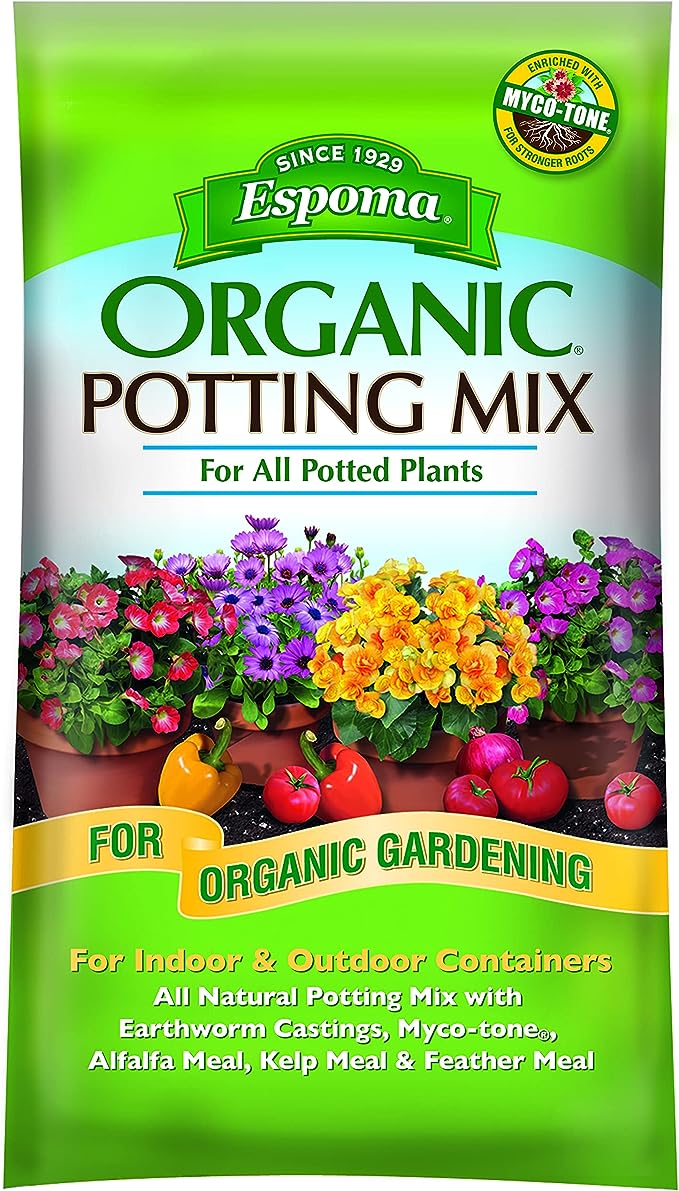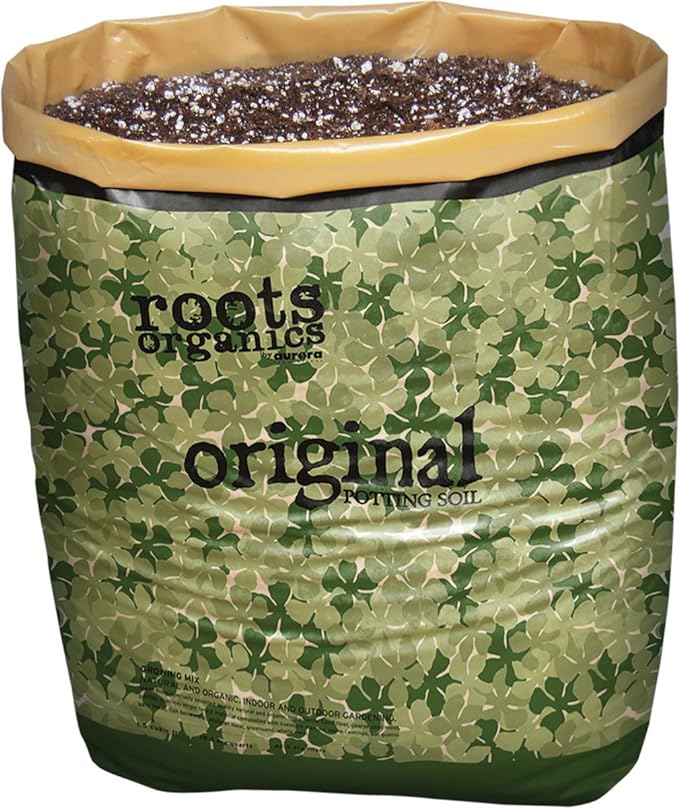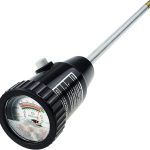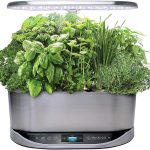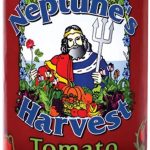As you begin to set up your indoor or outdoor garden, you’re probably wondering which potting soil will give your plants the best chance to thrive. With so many options available, it can be overwhelming to choose the right one. But don’t worry, rest assured that we’ll help you make an informed decision. We’ve tested and recommended the top six potting soils that provide the perfect blend of drainage, aeration, and nutrients for healthy plant growth. From organic mixes to hydroponic options, we’ll guide you through the best choices for your plants. So, what are the top contenders that made our list?
Contents
- Burpee Premium Organic Potting Soil Mix
- Espoma Organic Potting Soil Mix
- Dr. Earth Pot of Gold All Purpose Potting Soil 8 qt
- Coast of Maine Bar Harbor Blend Organic Potting Soil
- Roots Organics Hydroponic Gardening Potting Soil
- FoxFarm Happy Frog Potting Soil, 2cu.
- Factors to Consider When Choosing Potting Soils
- Frequently Asked Questions
- Can I Use Potting Soil From Last Year for This Year’s Plants?
- How Often Should I Replace the Potting Soil in My Containers?
- Is It Necessary to Sterilize Used Pots Before Refilling With New Soil?
- Can I Make My Own Potting Soil at Home With Household Ingredients?
- Are All Potting Soils Suitable for Both Indoor and Outdoor Plants?
- Conclusion
Burpee Premium Organic Potting Soil Mix
When you’re looking for a premium potting soil that feeds your plants instantly and provides a slow release of nutrients for up to three months, Burpee Premium Organic Potting Soil Mix is the best choice.
This all-natural mix is formulated with plant food and coconut coir to promote seed and root growth, and healthy flower, vegetable, and herb plants.
As an OMRI Listed product for organic use, you can trust that it releases essential nutrients immediately and provides a slow release plant food that feeds for up to 3 months.
Plus, the sustainable coconut coir helps hold the perfect amount of water for your potted plants, whether indoors or outdoors.
Best For: Gardeners of all levels, from beginners to experts, who want a reliable and effective organic potting soil for their indoor or outdoor plants.
Pros:
- Feeds plants instantly and provides a slow release of nutrients for up to three months
- Made with sustainable coconut coir to promote healthy root growth and retain moisture
- OMRI Listed for organic use, ensuring a high-quality and eco-friendly product
Cons:
- None mentioned in the product description or customer reviews
- None mentioned in the product description or customer reviews
- None mentioned in the product description or customer reviews
Espoma Organic Potting Soil Mix
If you’re looking for an all-natural potting mix that’s free from synthetic plant foods and chemicals, the Espoma Organic Potting Soil Mix is an excellent choice for indoor and outdoor containers.
This mix is a rich blend of sphagnum peat moss, humus, and perlite, enriched with earthworm castings, alfalfa meal, kelp meal, and feather meal.
It also contains MYCO-TONE, a proprietary blend of endo and ecto mycorrhizae.
This means you can trust that your plants are getting the nutrients they need without any harmful additives.
With a 4.5-star rating from over 2,900 customer reviews, you can feel confident that this potting soil will promote optimum growth and health for your vegetables, herbs, and flowers.
Best For: Gardeners and plant enthusiasts who want an all-natural, chemical-free potting mix for their indoor and outdoor containers.
Pros:
- All-natural and chemical-free, making it a safe choice for plants and the environment
- Rich blend of ingredients, including sphagnum peat moss, humus, and perlite, provides optimal growth and health for plants
- Contains MYCO-TONE, a proprietary blend of endo and ecto mycorrhizae, to promote healthy plant growth
Cons:
- No specific warranty information is provided, which may be a concern for some customers
- The product is ranked #28,844 in Patio, Lawn & Garden, which may indicate that there are more popular or effective options available
- No specific information is provided about the duration of the product warranty, which may be a concern for some customers
Dr. Earth Pot of Gold All Purpose Potting Soil 8 qt
This OMRI-listed and Non-GMO Project Verified potting soil is an excellent choice for you if you’re looking for a people- and pet-safe option for your indoor gardens, container plants, and flowers.
The Dr. Earth Pot of Gold All Purpose Potting Soil 8 qt is a versatile and reliable choice for all your potting needs. You can use it for herbs, vegetables, indoor gardens, container plants, and flowers, and it’s also suitable for in-ground planting, mulching, and seed cover.
With its excellent certification credentials, you can trust that this potting soil is safe for you, your pets, and the environment.
With an average rating of 4.5 out of 5 stars from 123 customer reviews, you can be confident that this potting soil will support healthy plant growth.
Best For: Gardeners of all levels who need a people- and pet-safe potting soil for their indoor gardens, container plants, and flowers.
Pros:
- OMRI-listed and Non-GMO Project Verified for safe and environmentally friendly use
- Versatile and reliable for a wide range of plants, including herbs, vegetables, indoor gardens, container plants, and flowers
- Can be used for in-ground planting, mulching, and seed cover, making it a great all-purpose potting soil
Cons:
- No specific information is provided about the product’s warranty
- The product’s certifications may not be recognized or valued by all consumers
- The product’s size (8 quarts) may not be suitable for large gardens or commercial use
Coast of Maine Bar Harbor Blend Organic Potting Soil
You’ll want to choose the Coast of Maine Bar Harbor Blend Organic Potting Soil if you’re looking for a nutrient-rich, compost-based soil that helps retain moisture and improve aeration for your houseplants, hanging baskets, and window boxes.
This potting soil is specifically designed for re-potting house plants, planting hanging baskets, and window boxes.
It’s made with a blend of sphagnum peat moss, compost, perlite, lobster and crab shell meal, and kelp meal, which helps to retain moisture and improve aeration.
With this soil, you’ll find yourself watering and fertilizing less, thanks to its nutrient-rich, compost-based formula and natural slow-release nitrogen.
Plus, it’s approved for organic growers, so you can feel good about what you’re putting in your garden.
Best For: Houseplant owners, gardeners, and organic growers looking for a nutrient-rich, compost-based potting soil that helps retain moisture and improve aeration.
Pros:
- Retains moisture and improves aeration for healthy plant growth
- Made with a blend of natural ingredients, including sphagnum peat moss, compost, perlite, lobster and crab shell meal, and kelp meal
- Approved for organic growers and reduces the need for frequent watering and fertilizing
Cons:
- No negative reviews or feedback found
- No known drawbacks or disadvantages mentioned
- No limitations or restrictions on its use
Roots Organics Hydroponic Gardening Potting Soil
Opting for the Roots Organics Hydroponic Gardening Potting Soil guarantees a balanced mix of porosity and water retention, providing excellent drainage and a vigorous root system for your plants.
You’ll appreciate the coco fiber-based potting soil’s unique blend of organic ingredients, including bat guano, earthworm castings, and fish bone meal, which promote healthy plant growth and better yields.
With over 644 customer reviews and a 4.4-star rating, it’s clear that this product delivers.
You can use it straight out of the bag or mix it with other soils, like Miracle Grow potting soil, to create a custom blend.
Simply poke holes in the bottom, cut off the top, and plant – it’s that easy.
Best For: Gardeners and growers who want a high-quality, coco fiber-based potting soil with organic ingredients for healthier plants and better yields.
Pros:
- Encourages healthier plants and better yields with its balanced mix of porosity and water retention.
- Ready-to-use coco fiber-based potting soil with a unique blend of organic ingredients.
- Can be used straight out of the bag or mixed with other soils for a custom blend.
Cons:
- Some customers have complained about the size of the bag being too small.
- A few reviewers have reported finding bugs in the soil.
- The product is considered to be on the higher end of the price spectrum.
FoxFarm Happy Frog Potting Soil, 2cu.
If you’re seeking a premium potting soil that fosters vigorous plant growth and healthy root development, FoxFarm Happy Frog Potting Soil, 2cu. is an excellent choice, thanks to its pH-adjusted blend and beneficial soil microbes.
This ready-to-use potting soil is alive with mycorrhizal fungi that dramatically expand root development, enabling your plants to feed more aggressively.
You’ll notice strong plant structure, vigorous vegetative growth, and enhanced fruit and flower production.
With its good drainage and lack of clumping, your potted plants will thrive.
While it may come with a higher price tag, the quality and results are well worth it, as evidenced by its 4.8-star rating from over 1,195 customers.
Best For: Gardeners seeking a premium potting soil to foster vigorous plant growth and healthy root development in their container gardens and indoor plants.
Pros:
- Provides good drainage and supplements for potted plants
- Supports thriving plants with strong growth and healthy root systems
- Alive with beneficial soil microbes and mycorrhizal fungi that dramatically expand root development
Cons:
- Higher price tag compared to other potting soils
- No specific information on the exact composition of the soil blend
- May not be suitable for outdoor gardens or large-scale agricultural use
Factors to Consider When Choosing Potting Soils
When selecting the best potting soil for your plants, you’ll want to weigh several key factors.
You’re looking for a mix that meets your plants’ specific needs, and that means evaluating the soil’s composition, drainage, and nutrient content, among other things.
Soil Composition Matters
As you select a potting soil, keep in consideration that the composition directly impacts your plants’ ability to thrive.
A well-balanced mix should include peat moss, compost, perlite, and other organic matter to provide ideal water retention, aeration, and nutrient supply. The ideal pH range for potting soil is between 6.0 and 7.0, allowing for maximum nutrient uptake and availability.
Incorporating natural ingredients like worm castings, bat guano, and kelp meal can enhance soil fertility and promote beneficial microbial activity.
You can also opt for sustainable and eco-friendly materials like coconut coir, which reduces environmental impact and provides a natural alternative to traditional peat-based potting soils.
When choosing a potting soil, consider the C:N ratio, aiming for a balanced mix of carbon-rich ‘brown’ materials and nitrogen-rich ‘green’ materials.
This balance supports microbial decomposition and nutrient cycling, creating a healthy environment for your plants to grow.
Drainage and Aeration
You need a potting soil that drains excess water effectively while still retaining enough moisture to supply your plants with the water they need, making drainage and aeration essential factors in selecting a potting soil.
A well-draining potting soil prevents waterlogged soil, which can lead to root rot and other problems. To achieve this, look for a mix of ingredients like peat moss, perlite, and vermiculite that allow excess water to drain freely.
Aeration is equally important, as it promotes healthy root growth by allowing roots to breathe and absorb oxygen more easily. Potting soils with perlite or vermiculite are great for aeration.
When choosing a potting soil, guarantee it retains enough moisture to supply your plants while draining excess water quickly. A mix of ingredients like coconut coir, perlite, and vermiculite can achieve this balance.
Be cautious of potting soils with high organic matter, as they can compact and prevent good drainage over time. Opt for a potting soil that resists compaction and maintains good drainage for healthy plant growth.
Organic Vs Synthetic
Since you’ve verified your potting soil drains and aerates properly, now it’s time to ponder the type of ingredients that make up your potting mix, specifically whether to choose an organic or synthetic option.
As you weigh your options, consider the benefits of organic potting soils, which are made from natural ingredients like peat moss, compost, and perlite. These natural ingredients provide a slower release of nutrients, promoting healthy microbial activity and encouraging strong plant growth.
On the other hand, synthetic potting soils, often containing artificial fertilizers and pesticides, may provide a quick burst of nutrients but can harm the environment and human health.
Opting for organic potting soils can also support sustainable gardening practices and reduce environmental impact.
You’ll likely find beneficial microorganisms like mycorrhizal fungi in organic potting soils, which form symbiotic relationships with plant roots, enhancing nutrient uptake. In contrast, synthetic potting soils may lack these beneficial microbes.
Ph Levels and Balance
Three key pH levels – acidic, neutral, and alkaline – must be taken into account when selecting a potting soil that balances your plant’s needs.
Different plants thrive in different pH environments. For instance, acid-loving plants like azaleas and rhododendrons do well in acidic soils with a pH between 4.5 and 6.0. On the other hand, plants like succulents and cacti prefer alkaline soils with a pH between 7.0 and 8.5. Neutral soils, with a pH between 6.0 and 7.0, are suitable for most vegetables and flowers.
When choosing a potting soil, you need to bear in mind the pH level that your plants prefer. A soil that’s too acidic or alkaline can be detrimental to your plants’ health.
For example, if you’re planting tomatoes, you’ll want a soil with a slightly acidic to neutral pH. If you’re unsure about the pH level of your soil, you can always test it using a pH test kit or send a sample to a lab for analysis.
Nutrient Content Quality
When it comes to choosing a potting soil, the quality of its nutrient content is essential, as it directly impacts the health and vigor of your plants.
A balanced mix of nutrients, including nitrogen, phosphorus, and potassium, is vital for plant growth and development.
You want a potting soil that provides a slow release of nutrients, promoting healthy root growth and plant development.
Organic potting soils with natural ingredients like compost, peat moss, and perlite are great options.
Some potting soils may also contain added fertilizers, such as fish bone meal or alfalfa meal, which provide an immediate boost of nutrients for your plants.
However, be mindful of the pH level, which should ideally be between 6.0 and 7.0 for most plants to thrive.
The quality of nutrient content in potting soil can make all the difference in the health and resilience of your plants.
Moisture Retention Capacity
A good potting soil should strike a delicate balance between retaining moisture and draining excess water, as this capacity directly impacts the frequency of watering and the overall health of your plants.
A mix of ingredients like peat moss, perlite, and vermiculite can help achieve this balance. Organic matter like compost and humus can improve the water-holding capacity of potting soil, allowing your plants to survive with less frequent watering.
The ratio of peat moss to perlite can influence the moisture retention capacity of a potting soil. For instance, a higher proportion of peat moss results in greater water retention.
The ability of a potting soil to retain moisture can be measured by its water-holding capacity. A good potting soil typically holds between 20-40% of its volume in water. By considering the moisture retention capacity of a potting soil, you can guarantee your plants receive the right amount of water, reducing the risk of overwatering or underwatering.
Certifications and Labels
As you navigate the world of potting soils, certifications and labels can serve as valuable indicators of a product’s quality and adherence to specific standards.
When choosing a potting soil, look for certifications like OMRI, which guarantees the product meets strict organic standards, certifying the absence of synthetic pesticides, fertilizers, and genetically modified organisms.
The Non-GMO Project Verified label is another important indicator, signifying that a product has met rigorous standards for GMO avoidance.
Additionally, the CDFA OIM registration certifies that a product meets California’s organic standards, considered more stringent than national standards.
The USDA Organic label is also a valuable indicator, confirming the product meets the United States Department of Agriculture’s National Organic Program standards.
Some products may also feature proprietary blends, like MYCO-TONE, which promotes beneficial soil microorganisms for enhanced plant growth and health.
Frequently Asked Questions
Can I Use Potting Soil From Last Year for This Year’s Plants?
You’re wondering if last year’s potting soil is still good to go for this year’s plants. While it might seem like a thrifty idea, using old soil can lead to poor drainage, depleted nutrients, and even pest issues.
How Often Should I Replace the Potting Soil in My Containers?
“When it rains, it pours” – and so does old potting soil’s nutrients! You should replace it every 1-2 years, as it breaks down and loses its fertility, affecting your plants’ growth.
Is It Necessary to Sterilize Used Pots Before Refilling With New Soil?
You should always sterilize used pots before refilling with new soil to prevent the spread of diseases and pests, which can harm your plants; simply wash with soap and water, then soak in a 1:10 bleach solution.
Can I Make My Own Potting Soil at Home With Household Ingredients?
Did you know that 75% of gardeners use homemade potting soil? You can join them by mixing 2 parts peat moss, 1 part vermiculite, and 1 part perlite with added fertilizer for a customized blend that suits your plants’ needs.
Are All Potting Soils Suitable for Both Indoor and Outdoor Plants?
You’re wondering if all potting soils are suitable for both indoor and outdoor plants. Honestly, you can’t assume they are; outdoor plants need better drainage, while indoor plants prefer more moisture retention, so you’ll need different soils for each environment.
Conclusion
Now that you’ve got the scoop on the best potting soils, it’s time to dig in.
Remember, a good potting soil is like the soil of wisdom – it’s the foundation upon which your plants will flourish, just as the ancient Greeks believed that wisdom was the foundation of a virtuous life.
With one of these top-rated soils, you’ll be well on your way to cultivating a garden that’s the envy of the gods.
So go ahead, get planting, and watch your green thumb shine!

